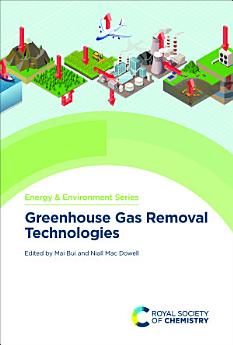Greenhouse Gas Removal Technologies
Tungkol sa ebook na ito
This book provides the most up-to-date information on GGR technologies that provide removal of atmosphere CO2, giving insight into their role and value in achieving climate change mitigation targets. Chapters discuss the issues associated with commercial development and deployment of GGRs, providing potential approaches to overcome these hurdles through a combination of political, economic and R&D strategies.
With contributions from leaders in the field, this title is an indispensable resource for graduate students and researchers in academia and industry, working in chemical engineering, mechanical engineering and energy policy.
Tungkol sa may-akda
Niall is a Reader in Energy Systems at Imperial College London. He is a Chartered Engineer, a Fellow of both the IChemE and the Royal Society of Chemistry. His research is focused on understanding the transition to a low carbon economy. Since 2010, he has published more than 100 peer-reviewed scientific papers in this context. Niall has more than a decade’s experience as a consultant to the public and private sectors. He has worked with a range of private sector energy companies and has provided evidence to members of the Select Committee on Energy and Climate Change. He has given advice to DECC/BEIS, the IEA, the IEAGHG the ETI and the JRC. Niall is a member of Total’s Scientific Committee, was also the only non-US member of the US National Petroleum Council (NPC) CCUS Roadmap Team. Niall has been a member of the technical working group of the Zero Emissions Platform (ZEP), the Carbon Capture and Storage Association (CCSA) and from 2015 – 2019 served as the Secretary of the IChemE's Energy Centre. Finally, Niall was awarded the Qatar Petroleum Prize for his work on Clean Fossil Fuels in 2010 and the IChemE’s Nicklin medal for his work on low carbon energy in 2015.
Mai is a Research Associate in the Centre for Environmental Policy at Imperial College London. Her current research is on the topics of CCS, negative emissions technologies (BECCS & DAC), and grid-scale clean energy storage solutions. Mai has first-hand experience in designing pilot plant test campaigns to demonstrate dynamic/flexible operation, including CSIRO’s pilot plant (AGL Loy Yang power station, Australia) and the CO2 capture facility at TCM (Mongstad, Norway). Mai has expertise in developing dynamic process models and surrogate models of CO2 capture processes in different applications. Since completing her PhD (end of 2015), Mai has published 14 peer-reviewed journal papers, a book, book chapter and reports on CCS and NETs for IChemE and Imperial College.








